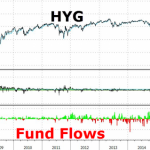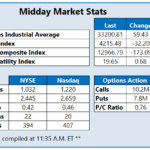Total business sales – sales by wholesalers, manufacturers and retailers – have fallen 5% from their July 2014 peak of $1.365 trillion. At $1.296 trillion for January 2016, total business sales have dropped back to where they were in January of 2013 ($1.293 trillion). In fact, the erosion of total sales by American businesses are even uglier when one takes inflation into account.
Over the last 20 years, whenever total business sales continued on an upward trajectory, the U.S. economy steered clear of recession. The tech wreck of 2000 and the attacks in September of 2001 resulted in a downward move for business revenue; economic contraction was not far behind. The financial crisis slammed the brakes on business sales in 2008, ushering in The Great Recession; it ended around the same time that businesses began to increase their revenue streams.

Might the year-and-a-half long downturn in revenue generation through January of 2016 be an anomaly? Yes and no. Yes, it is certainly possible that we did not hit “peak sales” in July of 2014; rather, the U.S. economy may still find solid footing in the months ahead. On the other hand, take a look what happened to the U.S. dollar via PowerShares DB Dollar Bullish (UUP) beginning in July of 2014. After years of trading near decade lows, the greenback rocketed 25% against major world currencies. The result? U.S. exporters struggled to sell their wares, commodity prices collapsed and foreign stocks never quite recovered.

The dollar’s vertical move adversely impacted earnings as well. Consider earnings-per-share (EPS) for the S&P 500. More than half of the profits at S&P 500 corporations emanate from overseas, where significantly devalued currencies hindered the proverbial “bottom line.” Specifically, earnings hit a high water mark in Q3 2014 (July-September). Earnings have been falling ever since.

Everything comes back to the dollar’s epic ascent in the 3rd quarter of 2014. Slumping sales. Slumping earnings. Even the top for non-U.S. equities.















Leave A Comment